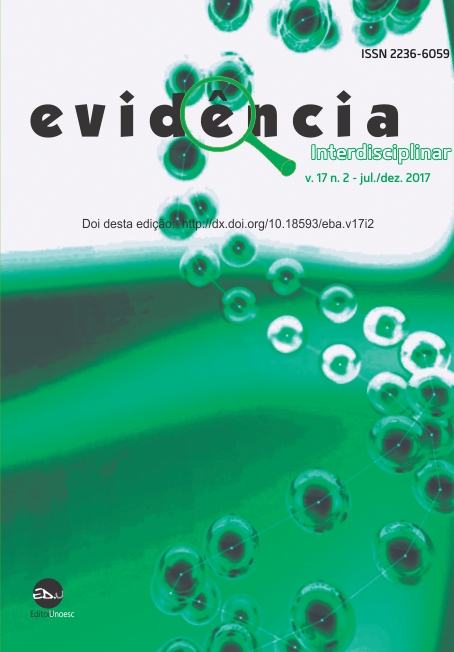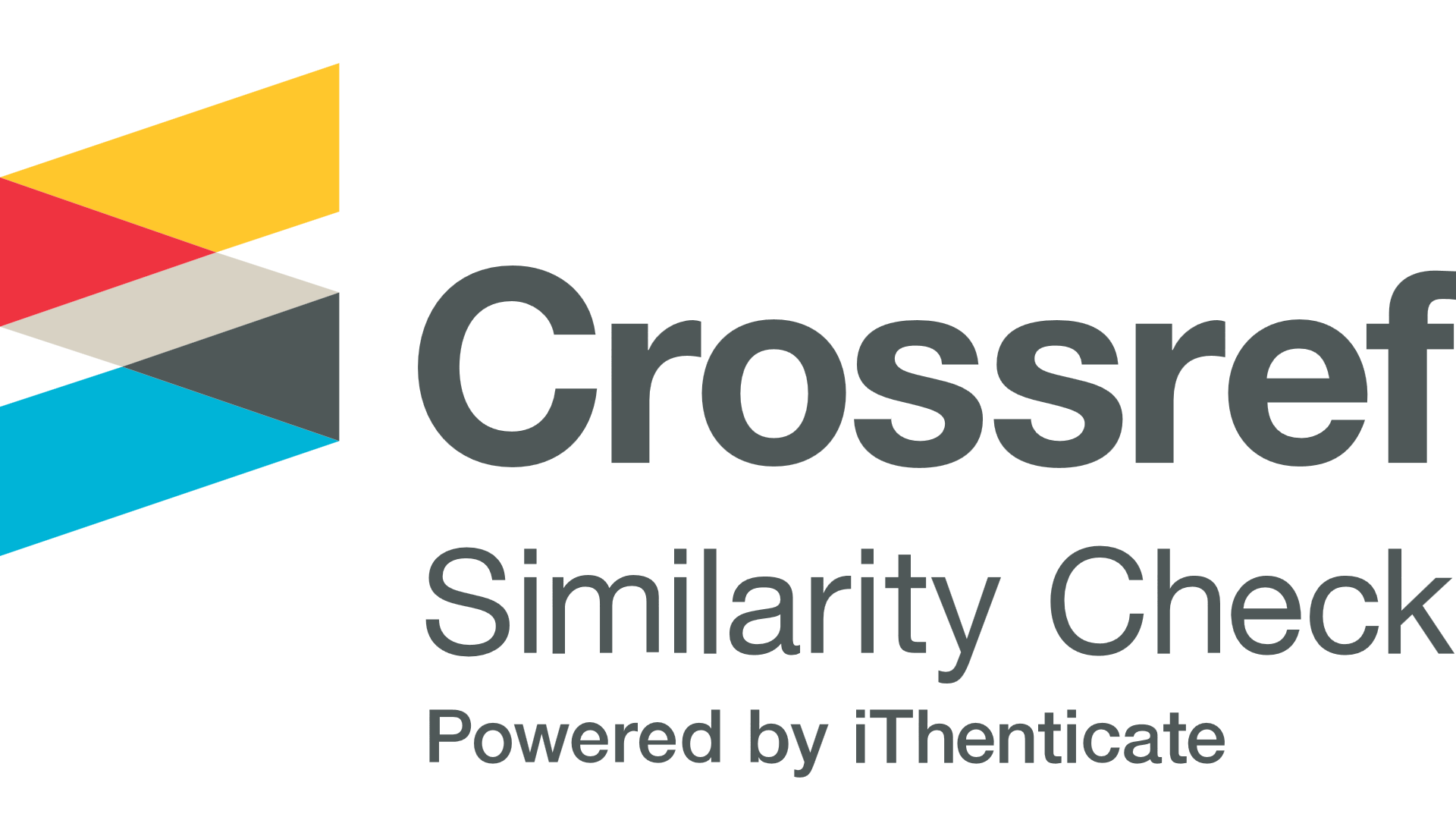Efeitos da contaminação da água pelo fármaco 17α-etinilestradiol, detecção e tipos de tratamento
DOI:
https://doi.org/10.18593/eba.v17i2.15956Palavras-chave:
17α-etinilestradiol, fármacos, contaminação, água, tratamento.Resumo
Assim como outros esteroides estrogênicos, como o estrona (E1), o 17β-estradiol (E2), e o estriol (E3), o 17α-etinilestradiol (EE2) é um hormônio sintético, derivado do hormônio natural, que pode ser lançado no meio ambiente por meio de descarga de esgoto doméstico e de efluentes industriais não tratados. Ele é um dos medicamentos mais utilizados, o que aumenta seu potencial de presença no ambiente. Pode, também, contaminar o ambiente quando utilizado em atividades pecuárias e agrícolas. Este estudo centra-se em alertar acerca dos efeitos do EE2 à saúde humana e animal, bem como em informar que diversas pesquisas apontam a ineficácia de tratamento desse fármaco pelas Estações de Tratamento de Águas Residuais (ETARs), bem como pelas Estações de Tratamento de Efluentes (ETEs). Os mecanismos e alguns métodos de tratamento de águas contaminadas com o EE2 são discutidos sem desconsiderar alguns outros esteroides do mesmo grupo etinil.
Palavras-chave: 17α-etinilestradiol. Fármacos. Contaminação. Água. Tratamento.
Downloads
Referências
Bila DM, Dezotti M. Desreguladores endócrinos no meio ambiente: efeitos e conseqüências. Quím. Nova 2007; 30:651-66.
Bergman A, Heindel JJ, Jobling S, Kidd KA, Zoeller TR. State of the science of endocrine disrupting chemicals. Geneva: United Nations Environment Programme/World Health Organization; 2012.
Olivares-Rubio HF, Dzul-Caamal R, Gallegos-Rangel ME, Madera-Sandoval RL, Domínguez-López ML, García-Latorre E, Vega-López A. Relationship between biomarkers and endocrine-disrupting compounds in wild Girardnichthys viviparus from two lakes with different degrees of pollution. Ecotoxicology. 2015 Apr; 24(3):664-85.
Liu J, Wang R, Huang B, Lin C, Zhou J, Pan X. Biological effects and bioaccumulation of steroidal and phenolic endocrine disrupting chemicals in high-back crucian carp exposed to wastewater treatment plant effluents. Environ Pollut 2012;162:325–31.
Cunha DL, Silva SMC, Bila DM, Oliveira JLM, Sarcinelli PN, Larentis AL. Regulamentação do estrogênio sintético 17α-etinilestradiol em matrizes aquáticas na Europa, Estados Unidos e Brasil. Cad. Saúde Pública, Rio de Janeiro, 32(3):e00056715, mar, 2016.
Mills MR, Arias-Salazar K, Baynes A, Shen LQ, Churchley J, Beresford N, Gayathri C, Gil RR, Kanda R, Jobling S, Collins TJ. Removal of ecotoxicity of 17α-ethinylestradiol using TAML/peroxide water treatment. Sci Rep. 2015; 5: 10511.
Saaristo M, Wong BBM, Mincarelli L, Craig A, Johnstone CP, Allinson M, Lindström K, Craft JA. Characterisation of the transcriptome of male and female wild-type guppy brains with RNA-Seq and consequences of exposure to the pharmaceutical pollutant, 17α-ethinyl estradiol. Aquat Toxicol. 2017 May; 186:28-39.
Bhandari RK, Deem SL, Holliday DK, Jandegian CM, Kassotis CD, Nagel SC, Tillitt DE, Vom Saal FS, Rosenfeld CS. Effects of the environmental estrogenic contaminants bisphenol A and 17α-ethinyl estradiol on sexual development and adult behaviors in aquatic wildlife species. Gen Comp Endocrinol. 2015 Apr 1;214:195-219.
Aris AZ, Shamsuddin AS, Praveena SM. Occurrence of 17α-ethynylestradiol (EE2) in the environment and effect on exposed biota: a review. Environ Int. 2014 Aug; 69:104-19.
Barcelos MN, Peres AP, Pereira IO, Chavasco LS, Freitas DF. Aplicação do método Failure Mode and Effect Analysis (FMEA) na identificação de impactos ambientais causados pelo descarte doméstico de medicamentos. Engenharia Ambiental 2011; 8(4): 62-68.
Melo SAS, et al. Degradação de fármacos residuais por processos oxidativos avançados. Quím. Nova, São Paulo, 2009; 32 (1): 188-197, 2009.
Daniel MS, Lima EC. Determinação simultânea de estriol, β-estradiol, 17α-etinilestradiol e estrona empregando-se extração em fase sólida (SPE) e cromatografia líquida de alta eficiência (HPLC). Rev. Ambient. Água, Taubaté, v. 9, n. 4, p. 688-695, Dez. 2014.
Ting, YF; Praveena, SM. Sources, mechanisms, and fate of steroid estrogens in wastewater treatment plants: a mini review. Environ Monit Assess; 2017 Apr; 189(4): 178.
Cong VH, Iwaya S, Sakakibara Y. Removal of estrogens by electrochemical oxidation process. J Environ Sci (China) 2014; J Environ Sci (China). 2014 Jun 1;26(6):1355-60.
Brandt EMF, Queiroz FB, Afonso RJCF, Aquino SF, Chernicharo CAL. Behaviour of pharmaceuticals and endocrine disrupting chemicals in simplified sewage treatment systems. J Environ Manage 2013; 128:718-26.
De Wit M, Keil D, van der Ven K, Vandamme S, Witter E, de Coen W. An integrated transcriptomic and proteomic approach characterizing estrogenic and metabolic effects of 17α-ethinylestradiol in zebrafish (Danio rerio). Gen Comp Endocrinol 2010;167:190–210.
Crouse BA, Ghoshdastidar AJ, Tong AZ. The presence of acidic and neutral drugs in treated sewage effluents and receiving waters in the Cornwallis and Annapolis River watersheds and the Mill CoveSewage Treatment Plant in Nova Scotia, Canada. Environmental Research 112 (2012) 92–99.
Li X; Zheng W; Kelly WR. Occurrence and removal of pharmaceutical and hormone contaminants in rural wastewater treatment lagoons. Science of the Total Environment 445–446 (2013) 22–28.
Manickum T, John W. Occurrence, fate and environmental risk assessment of endocrine disrupting compounds at Environ Monit Assess (2017) 189:178 Page 17 of 19 178 the wastewater treatment works in Pietermaritzburg (South Africa). Science of the Total Environment 2014, 468-469, 584– 597.
Lee HB, Liu D. Degradation of 17β-estradiol and its metabolites by sewage bacteria. Water Air Soil Pollution 2002, 134, 353–368.
E4876 SIGMA 17α-Ethynylestradiol. Disponível em: <http://www.sigmaaldrich.com/catalog/product/sigma/e4876?lang=pt®ion=BR#>. Acesso em: 28 ago. 2017.
Anwer F, Chaurasia S, Khan AA. Hormonally active agents in the environment: a state-of-the-art review. Rev Environ Health. 2016 Dec 1;31(4):415-433.
Aquino SF, Brandt EMF, Chernicharo CAL. Remoção de fármacos e desreguladores endócrinos em estações de tratamento de esgoto: revisão da literatura. Eng. Sanit. Ambient 2013 Set; v18 (3): 187-204. [acesso 30 ago. 2017]. Disponível em: <http://www.scielo.br/scielo.php?script=sci_arttext&pid=S1413-41522013000300187&lng=en&nrm=iso>.
Bhandari RK, Deem SL, Holliday DK, Jandegian CM, Kassotis CD, Nagel SC, Tillitt DE, Saal FS, Rosenfeld CS. Effects of the environmental estrogenic contaminants bisphenol A and 17a-ethinyl estradiol on sexual development and adult behaviors in aquatic wildlife species. Gen Comp Endocrinol. 2015 Apr 1;214:195-219.
Pérez MR, Fernandino JI, Carriquiriborde P, Somoza GM. Feminization and altered gonadal gene expression profile by ethinylestradiol exposure to pejerrey, Odontesthes bonariensis, a South American teleost fish. Environ Toxicol Chem. 2012 May; 31(5):941-6.
Green C, Brian J, Kanda R, Scholze M, Williams R, Jobling S. Environmental concentrations of anti-androgenic pharmaceuticals do not impact sexual disruption in fish alone or in combination with steroid oestrogens. Aquat Toxicol. 2015 Mar; 160:117-27.
Sárria MP, Santos MM, Castro LF, Vieira NM, Monteiro NM. Estrogenic chemical effects are independent from the degree of sex role reversal in pipefish. J Hazard Mater. 2013 Dec 15; 263 Pt 2:746-53.
Oropesa AL, Jiménez B, Gil MC, Osswald J, Fallola C, Pula HJ, Cuesta JM, Gómez L. Histological alterations in the structure of the testis in tench (Tinca tinca) after exposure to 17 alpha-ethynylestradiol. Environ Toxicol. 2014 Oct; 29(10):1182-92.
Hu S, Zhang H, Shen G, Yuan Z, Xu T, Ji R. Effects of 17β-estradiol and 17α-ethinylestradiol on the embryonic development of the clearhead icefish (Protosalanx hyalocranius). Chemosphere. 2017 Jun; 176:18-24.
Sun M, Xu D, Ji Y, Liu J, Ling W, Li S, Chen M. Using Fenton Oxidation to Simultaneously Remove Different Estrogens from Cow Manure. Saúde Pública Int J Environ Res V.13 (9); 2016 Set.
Borek-Dohalska L, Klusonova Z, Holecova J, Martinkova M, Barta F, Dracinska H, Cajthaml T, Stiborova M. Exposure of rats to exogenous endocrine disruptors 17alpha-ethinylestradiol and benzo(a)pyrene and an estrogenic hormone estradiol induces expression of cytochromes P450 involved in their metabolism. Neuro Endocrinol Lett. 2016 Dec 18;37(Suppl1):84-94.
Kuster M., de Alda L, MJ, Hernando, MD, Petrovic M, Martin-Alonso, J, Barcelo D. (2008). Analysis and occurrence of pharmaceuticals, estrogens, progestrogens and polar pesticides in sewage treatment plant effluents, river water and drinking water in the Llobregat river basin (Barcelona, Spain). Journal of Hydrology, 358, 112–123.
Pereira RO, Postigo C, Alda ML, Daniel LA, Barcelo D. (2011). Removal of estrogens through water disinfection processes and formation of by-products. Chemosphere, 82, 789–799.
Li YM, Zeng QL, Yang SJ (2011). Removal and fate of estrogens in an anaerobic-anoxic-oxic activated sludge system. Water Science and Technology, 51–56.
Hamid H, Eskicioglu C. (2012). Fate of estrogenic hormones in wastewater and sludge treatment: a review of properties and analytical detection techniques in sludge matrix. Water Research, 46, 5813–5833.
Layton, AC, Gregory, BW, Seward, JR, Schultz, TW, Sayler GS. (2000). Mineralization of steroidal hormones by biosolids in wastewater treatment systems in Tennessee U.S.A. Environmental Science and Technology, 34, 3925– 3931.
Racz LA., Goel RK (2009). Fate and removal of estrogens in municipal wastewater. Journal of Environmental Monitoring, 12, 58–70
Ting YF, Praveena SM. (2017) Sources, mechanisms, and fate of steroid estrogens in wastewater treatment plants: a mini review. Environ Monit Assess, 189:178.
Giowanella M, Bozza A, Dalzoto PR, Dionísio JÁ, Andraus S, Guimalhães EL. Gomes. Microbiological quality of water from the rivers of Curitiba, Paraná State, Brazil, and the susceptibility to antimicrobial drugs and pathogenicity of Escherichia coli. Environ Monit Assess (2015) 187: 673.
Nunes CN, Pauluk LE, Felsner ML, dos Anjos VE, Quináia SP. Rapid Screening Method for Detecting Ethinyl Estradiol in Natural Water Employing Voltammetry. J Anal Methods Chem. 2016; 2016: 3217080.
Torres NH, Amético JHP; Ferreira LFR; Nazato C, Maranho LA, Vilca FZ, Tornisielo VL. Fármacos no ambiente: revisão. REA – Revista de estudos ambientais (Online), v.14, n. 4, p. 67-75, jul./dez. 2012.
Park CM, Heo J, Yoon Y. Oxidative degradation of bisphenol A and 17α-ethinyl estradiol by Fenton-like activity of silver nanoparticles in aqueous solution, v. 168, p. 617-622, feb. 2017.
Karim S, Bae S, Greenwood D, Hanna K, Singhal N. Degradation of 17α-ethinylestradiol by nano zero valent iron under different pH and dissolved oxygen levels. Water Res. 2017 Aug 14;125:32-41.
Jarošová B, Filip J, Hilscherová K, Tuček J, Šimek Z, Giesy JP, Zbořil R, Bláha L. Can zero-valent iron nanoparticles remove waterborne estrogens? J Environ Gerenciar. 2015 1 de março; 150: 387-92.
Oliveira HG, Ferreira LH, Bertazzoli R, Longo C. Remediation of 17-α-ethinylestradiol aqueous solution by photocatalysis and electrochemically-assisted photocatalysis using TiO2 and TiO2/WO3 electrodes irradiated by a solar simulator, v. 72 (1), p.305-314, apr. 2015.
Feng Y, Wang C, Liu J, Zhang Z. Electrochemical degradation of 17-alpha-ethinylestradiol (EE2) and estrogenic activity changes. J Environ Monit. 2010 Feb;12(2):404-8.
Wang Y, Li Y, Zhang W, Wang Q, Wang D. Photocatalytic degradation and reactor modeling of 17α-ethynylestradiol employing titanium dioxide-incorporated foam concrete. Environ Sci Pollut Res Int. 2015 Mar;22(5):3508-17.
UNICEF. UNICEF e OMS lançam relatório sobre diarreia, a segunda maior causa de mortalidade infantil. 2009. [acesso 25 ago. 2017]. Disponível em: <http://www.unicef.org/brazil/pt/media_16165.htm>.
Augusto LGS, Gurgel IGD, Neto HFC, Melo CH, Costa AM. O contexto global e nacional frente aos desafios do acesso adequado à água para consumo humano. Ciência & Saúde Coletiva, 17(6):1511-1522, 2012.
Yang Y, Li J, Lu K, Shi H, Gao S. Transformation of 17α-ethinylestradiol by simultaneous photo-enzymatic process in Humic water. Chemosphere. 2017 Jul; 178:432-438.
Downloads
Publicado
Como Citar
Edição
Seção
Licença
Declaração de Direito Autoral
Os autores mantêm os direitos autorais e concedem à Revista o direito de primeira publicação, com o trabalho licenciado simultaneamente sob uma Licença Creative Commons – Atribuição – Não Comercial 4.0 Internacional.











